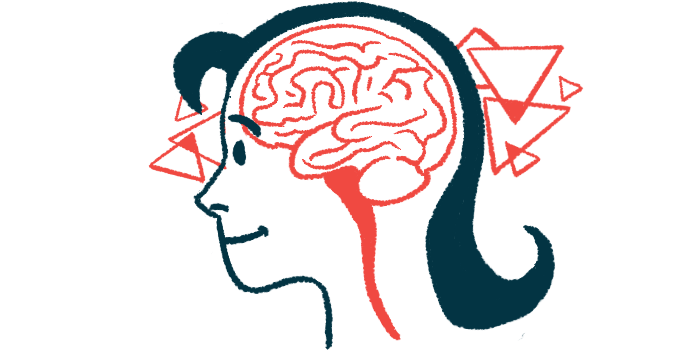Changes in brain circuitry may underlie anxiety, cognitive issues
MRI imaging used to look at activity in three interconnected brain circuits

People with Cushing’s disease have differences in brain activity that significantly associate with the severity of cognitive and mental health symptoms, implying such changes in brain activity may give rise to these symptoms.
That’s according to the recent study “Dynamic functional connectivity changes associated with psychiatric traits and cognitive deficits in Cushing’s disease,” published in the journal Translational Psychiatry.
These “findings may contribute to developing further neuro-modulation targets to help [Cushing’s disease] patients improve cognitive ability and mental health,” its researchers wrote.
Anxiety and memory loss known to affect Cushing’s disease patients
Cushing’s disease is caused by a tumor in the pituitary gland that releases a signaling molecule called adrenocorticotropic hormone (ACTH), which prompts the adrenal glands atop the kidneys to make excessive amounts of the stress hormone cortisol. Elevated cortisol levels drive most Cushing’s symptoms.
Problems with cognition and mental health, such as trouble with memory or attention, anxiety or depression, can be common in people with Cushing’s disease.
While previous studies have indicated that these patients have certain abnormalities in brain connectivity, it’s not known if they are related to the mental and cognitive issues that can accompany the disease.
Researchers in China used MRI imaging to analyze the brains of 50 people with Cushing’s disease and 57 healthy people as controls. All the participants were female, and imaging was done in a resting state.
As expected, Cushing’s patients generally had poorer scores on cognitive tests and more severe mental health problems.
Using MRI data, researchers conducted dynamic functional connectivity assessments — in essence, they looked at how different parts of the brain were interacting with each other.
“To our knowledge, no studies have ever investigated dynamic brain functional connectivity for patients with [Cushing’s disease],” the researchers noted.
They specifically focused on the activity of three interconnected brain circuits known to be important for regulating emotion and cognitive function: the default mode network (DMN), the salience network (SN), and the central executive network (CEN).
Connections between brain circuits weaker in patients than controls
Based on the activity of these circuits, researchers defined four general states of brain activity, ranging from State 1, where these three circuits largely are not connected to each other, to State 4, where the circuits are deeply connected with each other.
Compared with healthy individuals, people with Cushing’s disease tended to spend much more time in State 1 and less time in State 4.
Cushing’s patients with more time in State 1 tended to self-report more severe anxiety, and also tended to have higher levels of cortisol and ACTH, statistical tests showed.
Analyses also suggested that Cushing’s patients who spent more time in State 4 tended to have less depression and anxiety, as well as lower cortisol levels. Spending more time in State 1 and less time in State 4 also associated with poorer cognitive scores in these Cushing’s patients.
Looking at data in more detail, researchers found differences in brain activity within each of the overarching states. Compared with controls, Cushing’s disease patients tended to have weaker connections between some of the brain circuits in States 1 and 4.
Statistical analyses suggested that stronger connections in State 4, specifically between the DMN and SN networks, associated with less severe anxiety and depression, as well as better cognitive performance.
“Since [Cushing’s disease] patients showed decreased connection between DMN and SN, these results may suggest that the connection between DMN and SN was critical for understanding the psychiatric symptoms and cognitive deficits in [Cushing’s disease] patients,” the researchers wrote.
“We believe the temporal dynamics of functional connectivity within the three crucial cognitive and [emotion-related] brain networks could be a promising imaging biomarker to monitor cognitive changes and psychiatric symptoms in Cushing’s disease,” they added.
This study was limited by its small size and the fact that all participants were female, the researchers noted.







